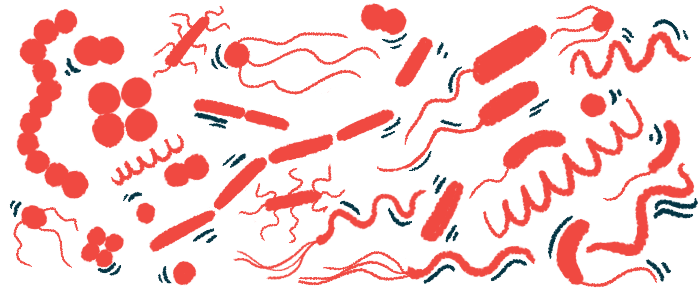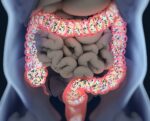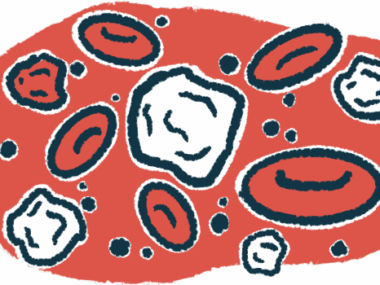SLE patients carry unique mix of tongue bacteria: Study
Bacteria diversity correlated with disease activity, post-treatment recovery
Written by |

People with systemic lupus erythematosus (SLE) have a unique mix of bacteria on their tongue compared with healthy people, according to a Chinese study.
Bacteria diversity correlated with disease activity, but also with recovery after treatment. The findings suggest oral bacteria “may be a therapeutic target for exploring new treatment approaches for SLE in the future,” the researchers wrote in the study, “Alterations in the human oral microbiota in systemic lupus erythematosus,” which was published in the Journal of Translational Medicine.
Evidence suggests the gut microbiome — the group of microorganisms living in the gut — could be an environmental trigger for SLE’s development and progression.
The mouth harbors a collection of more than 700 unique bacterial species that make up the oral microbiome. While disturbances in this microbiome have been linked to inflammatory diseases, including rheumatoid arthritis and COVID-19, few studies have investigated its role in SLE.
A team of researchers in China examined and compared the oral microbiome from tongue coating samples from 255 SLE patients and 280 healthy people, who served as controls.
Comparing the oral microbiome of SLE patients, healthy people
All controls and 213 SLE patients — 73 in whom samples were collected after treatment and 140 who’d never received treatment for SLE (treatment-naïve) — were from Zhengzhou. The remaining 42 treatment-naïve patients were from Haikou, China.
The researchers established two groups by dividing the patients randomly. A derivation group included 100 treatment-naïve patients from Zhengzhou and 200 healthy controls. A validation group included 40 treatment-naïve patients from Zhengzhou and 80 healthy controls. A cross-regional group of 42 SLE patients from Haikou and 80 healthy controls was also established.
When compared with controls, SLE patients had a significantly more diverse community of oral microorganisms.
In the derivation group, 709 microorganisms were shared between SLE patients and healthy controls, but 70 were specific to SLE. Also, 24 microorganisms were particularly enriched in SLE groups, while 22 others were enriched in healthy controls.
SLE patients had a higher abundance of 28 types of bacteria, including those from the genus Prevotella, Veillonella, Leptotrichia, Alloprevotella, and Lachnoanaerobaculum, while 22 other types of bacteria, namely from the genus Streptococcus, Porphyromonas, Rothia, Haemophilus, and Granulicatella, were reduced.
Further analysis to identify bacterial species that might contribute to the alterations seen in the oral microbiome of patients showed 39 bacterial species were found to be associated with clinical parameters, including gender, age, number of white blood cells, number of lymphocytes (a type of white blood cell), platelet counts, hemoglobin, and globulin levels. Hemoglobin is the protein in red blood cells responsible for oxygen transport, while globulins are a group of proteins in the blood.
Diagnostic potential of oral microbiome assessed
Since the oral microbiome of SLE patients differed from healthy controls, researchers assessed whether it could have a diagnostic potential.
They generated a random classifier model and identified two bacterial species, Sphingomonas and Actinomyces, that worked as optimal markers. The abundance levels of these two bacteria were used to calculate the probability of disease (POD) in each sample.
Using this model, they found the POD was significantly higher in the SLE derivation group than the control group. They then used another statistical parameter — area-under-curve (AUC) — to assess the overall diagnostic accuracy of the classification model. AUC values range from 0 to 1, with 1 indicating predictions are 100% correct.
The AUC had a value of 0.9166 in the derivation cohort, supporting that “the oral microbial marker-based classifier had powerful diagnostic potential for distinguishing SLE from [healthy controls],” the researchers wrote.
The model’s predictive power also was confirmed in the validation group, where AUC had a value of 0.8422, and in the cross-sectional group, where AUC was 0.8406.
To test whether disease activity influenced the oral microbiome, the researchers compared 140 SLE samples, which were divided into three groups according to their disease activity, as assessed by the SLE disease activity index (SLEDAI). A total of 68 were classified as mild (SLEDAI of six or lower), 58 as moderate (SLEDAI between seven and 11), and 14 as severe (SLEDAI of 12 or higher).
This analysis showed the abundance of microbial species increased with disease activity. Also, 69 unique bacterial species were found in the mild disease activity group, 78 in the moderate disease activity group, and 18 in the severe disease activity group.
The bacterial species Eubacterium nodatum and Anaerovoracaceae were significantly enriched in the severe disease activity group, while Solobacterium, Erysipelotrichales, and Erysipelotrichaceae were significantly enriched in the mild group.
Finally, the researchers compared the oral microbiome of 73 SLE patients who’d been treated and had no disease activity (SLEDAI equal to zero) with that of 146 controls. The oral microbiome diversity was significantly increased in SLE patients after treatment compared with controls.
Using nine bacterial species, they generated another classifier model that could distinguish post-treatment SLE patients from healthy controls with an AUC of 0.9942.
This study suggests the oral microbiome “correlated with clinical indicators in SLE and that the oral microbiota was altered as disease activity increased,” the researchers wrote, noting their findings must be validated in groups from different ethnicities at multiple locations.






